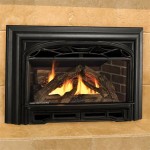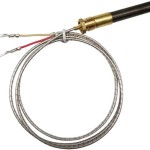Gas Fireplace Fronts: Enhancing Aesthetics and Functionality
Gas fireplaces offer a convenient and efficient heating solution for homes. Beyond their functional benefits, gas fireplaces also contribute significantly to the aesthetic appeal of a living space. A key component in achieving this aesthetic is the gas fireplace front. This article will explore the various aspects of gas fireplace fronts, including their functions, materials, styles, and considerations for selection and installation.
Gas fireplace fronts serve a multitude of purposes. Primarily, they act as a safety barrier, preventing accidental contact with the hot glass or ceramic components within the fireplace. This is particularly important in homes with children or pets. Furthermore, the front contributes to the overall visual design of the fireplace, masking the mechanical components and allowing the flames to be the focal point. They also play a role in directing airflow, optimizing the heating efficiency of the unit.
The term "gas fireplace front" encompasses a variety of designs, including screens, doors, and decorative panels. These elements not only protect the surrounding environment from the heat of the fire but also significantly influence the style and character of the room. The selection of a suitable front depends on factors such as the fireplace model, the desired aesthetic, and the specific safety requirements of the installation location.
### Functionality of Gas Fireplace FrontsThe primary function of a gas fireplace front is safety. The glass or ceramic panel, which radiates significant heat during operation, needs to be shielded to prevent burns. A well-designed front acts as a barrier, maintaining a safe distance between individuals and the hot surface. Often, these fronts are built with multiple layers of protective mesh or glass to further reduce the risk of accidental contact.
Beyond safety, a gas fireplace front plays a crucial role in ventilation. Fireplaces require adequate airflow to function efficiently and safely. The front design must allow for sufficient air intake to support combustion while also enabling the proper venting of exhaust gases. A blocked or poorly designed front can lead to incomplete combustion, creating hazardous carbon monoxide or reducing the fireplace's heating efficiency.
Furthermore, the front contributes to the ease of maintenance. Many models feature hinged or removable sections that allow for easy access to the firebox for cleaning and servicing. This simplifies tasks such as cleaning the glass, inspecting the burner, and replacing decorative logs or embers. A well-designed front minimizes the effort required for routine maintenance, ensures the fireplace remains in optimal operating condition, and extends its lifespan.
Another key function is the control of radiant heat. While the glass panel is designed to radiate heat into the room, the front can help to control the direction and intensity of this heat. Certain designs diffuse the heat more evenly, preventing hot spots and creating a more comfortable environment. This is especially important in smaller rooms where the fireplace is in close proximity to furniture or occupants.
### Materials Used in Gas Fireplace FrontsThe selection of materials for gas fireplace fronts is crucial, impacting both aesthetics and performance. Common materials include steel, cast iron, glass, and various metal alloys. Each material offers unique properties in terms of heat resistance, durability, and visual appeal.
Steel is a popular choice due to its strength, affordability, and versatility. Steel fronts are often powder-coated for added durability and to provide a variety of color options. They can be shaped into intricate designs and are relatively easy to maintain. Stainless steel, in particular, offers excellent corrosion resistance and is suitable for both indoor and outdoor applications.
Cast iron provides a classic, robust look and excellent heat retention. Cast iron fronts tend to be heavier and more expensive than steel fronts, but they offer superior durability and a timeless aesthetic. Their inherent weight makes them extremely stable, offering enhanced safety around the fireplace.
Glass is another integral component, often used in the door or panel of the front. Tempered glass is used for its heat resistance and shatter-resistant properties. Ceramic glass is also utilized because it can withstand incredibly high temperatures. These glass panels allow for unobstructed viewing of the flames, enhancing the visual experience. Some glass panels are treated with special coatings to reduce glare and improve heat radiation.
Metal alloys, such as brass, copper, and bronze, are often used for decorative accents or trim. These materials add a touch of elegance and sophistication to the fireplace front. They are typically used sparingly due to their higher cost and potential for tarnishing, which can be mitigated with protective coatings and regular polishing.
The chosen material not only impacts heat resistance, but also determines the overall maintenance requirements. For instance, steel fronts may require periodic cleaning to remove dust and soot, while cast iron fronts might need occasional rust prevention treatments. The specific material should be considered in light of the homeowner’s willingness and ability to maintain the fireplace front properly.
### Styles and Designs of Gas Fireplace FrontsGas fireplace fronts are available in a wide array of styles and designs, catering to various aesthetic preferences and architectural styles. From minimalist modern designs to ornate traditional styles, there is a front to complement any décor.
Modern fireplace fronts often feature clean lines, geometric shapes, and minimalist detailing. These designs typically utilize steel or glass, with a focus on simplicity and functionality. The emphasis is on allowing the flames to be the primary visual element, with the front acting as a subtle frame.
Traditional fireplace fronts, on the other hand, often incorporate ornate details, such as scrollwork, floral motifs, and antique finishes. These designs typically utilize cast iron or metal alloys like brass and bronze to create a sense of warmth and elegance. They are designed to evoke a sense of history and craftsmanship.
Transitional fireplace fronts blend elements of both modern and traditional styles. These designs may feature clean lines combined with subtle decorative accents. They often utilize a combination of materials, such as steel and glass, or steel and wood, to create a balanced and versatile look. Transitional styles are often used in homes that combine modern and traditional decorative elements elsewhere.
In addition to these broad categories, there are also specialized designs that cater to specific needs or preferences. For example, some fronts feature built-in screens or mesh to provide added safety, while others incorporate adjustable vents to control airflow. Some manufacturers offer custom designs, allowing homeowners to create a unique fireplace front that perfectly matches their individual style.
The selection of a suitable style depends on factors such as the overall décor of the room, the architectural style of the house, and the homeowner's personal preferences. It's important to consider how the fireplace front will integrate with the existing elements of the space, such as the furniture, wall color, and flooring materials.
Furthermore, the size and shape of the fireplace opening will influence the selection of the front. Some fireplaces have standard dimensions, while others require custom-sized fronts. Accurate measurements are essential to ensure a proper fit and a seamless integration with the surrounding wall or fireplace surround.
The finish of the fireplace front is another important consideration. Powder-coated finishes offer durability and a wide range of color options. Metal finishes, such as brushed nickel or antique bronze, add a touch of elegance and sophistication. The choice of finish should complement the other metal fixtures in the room, such as door hardware, light fixtures, and furniture accents. The finish also has implications on the maintenance of the fireplace front. Some finishes require more frequent cleaning or polishing to maintain their appearance.
Ultimately, the selection of a gas fireplace front is a matter of balancing aesthetic preferences with practical considerations. By carefully considering the various factors outlined above, homeowners can choose a front that enhances the beauty and functionality of their fireplace, creating a warm and inviting focal point in their home.

Belmont Small Gas Insert
Debating A Modern Or Traditional Fireplace Heat Glo

Enviro E Series Gas Or Propane Insert Fireplace Fireplaces By Cameron

White Mountain Hearth By Empire Vent Free Gas Fireplace Insert Innsbrook 28 Medium

Mendota Fv44i Gas Fireplace Insert With Willow Doors

Gdig3n Napoleon Fireplaces Oakville 3 Glass Gas Fireplace Insert Big George S Home Appliance Mart

Ambiance Gas Fireplaces Inserts

Nfi Certified Gas Fireplace Insert Installations Buffalo Rochester Ny

White Mountain Hearth By Empire Comfort Systems Direct Vent Gas Fireplace Insert Loft

Enviro E Series Gas Or Propane Insert Fireplace Fireplaces By Cameron
Related Posts








